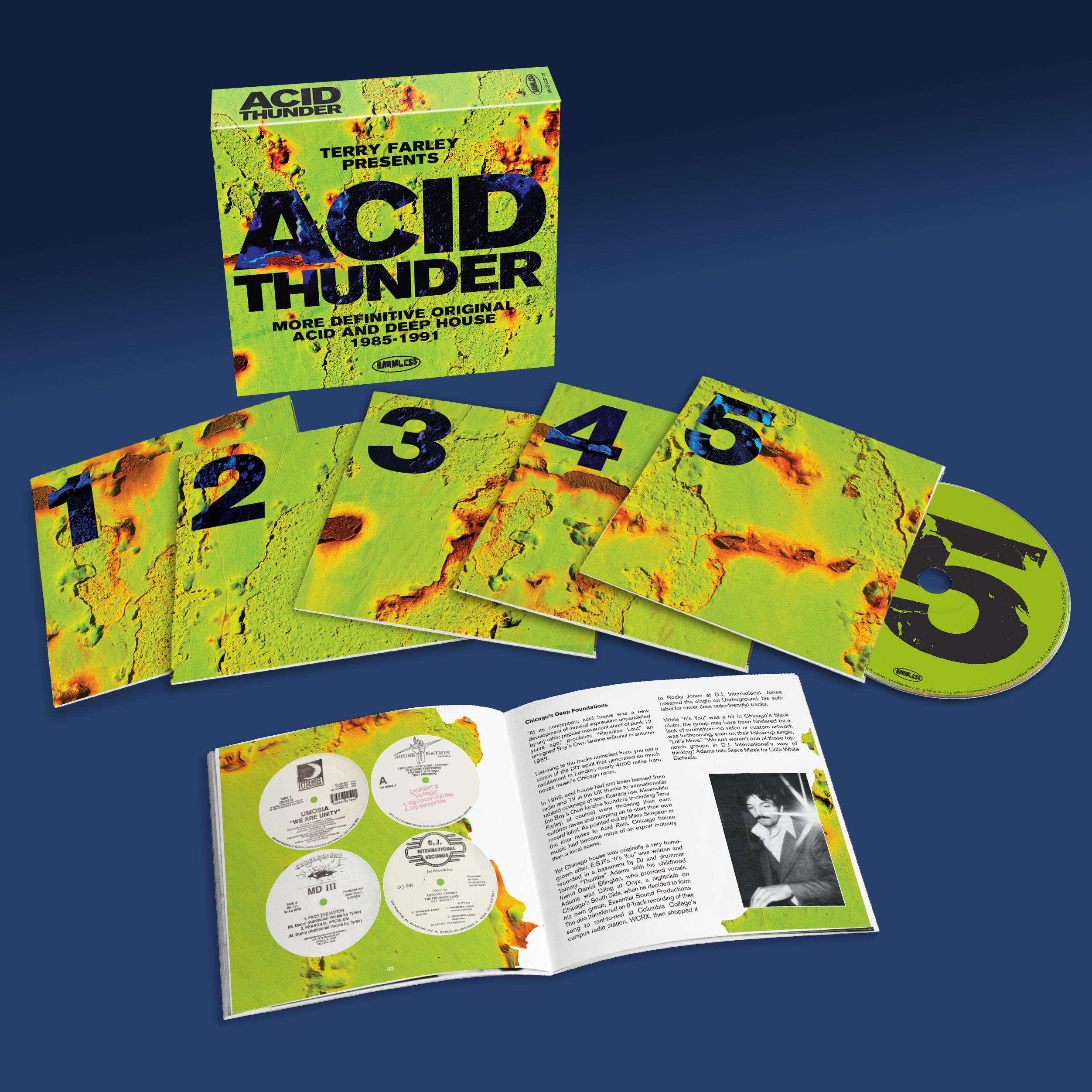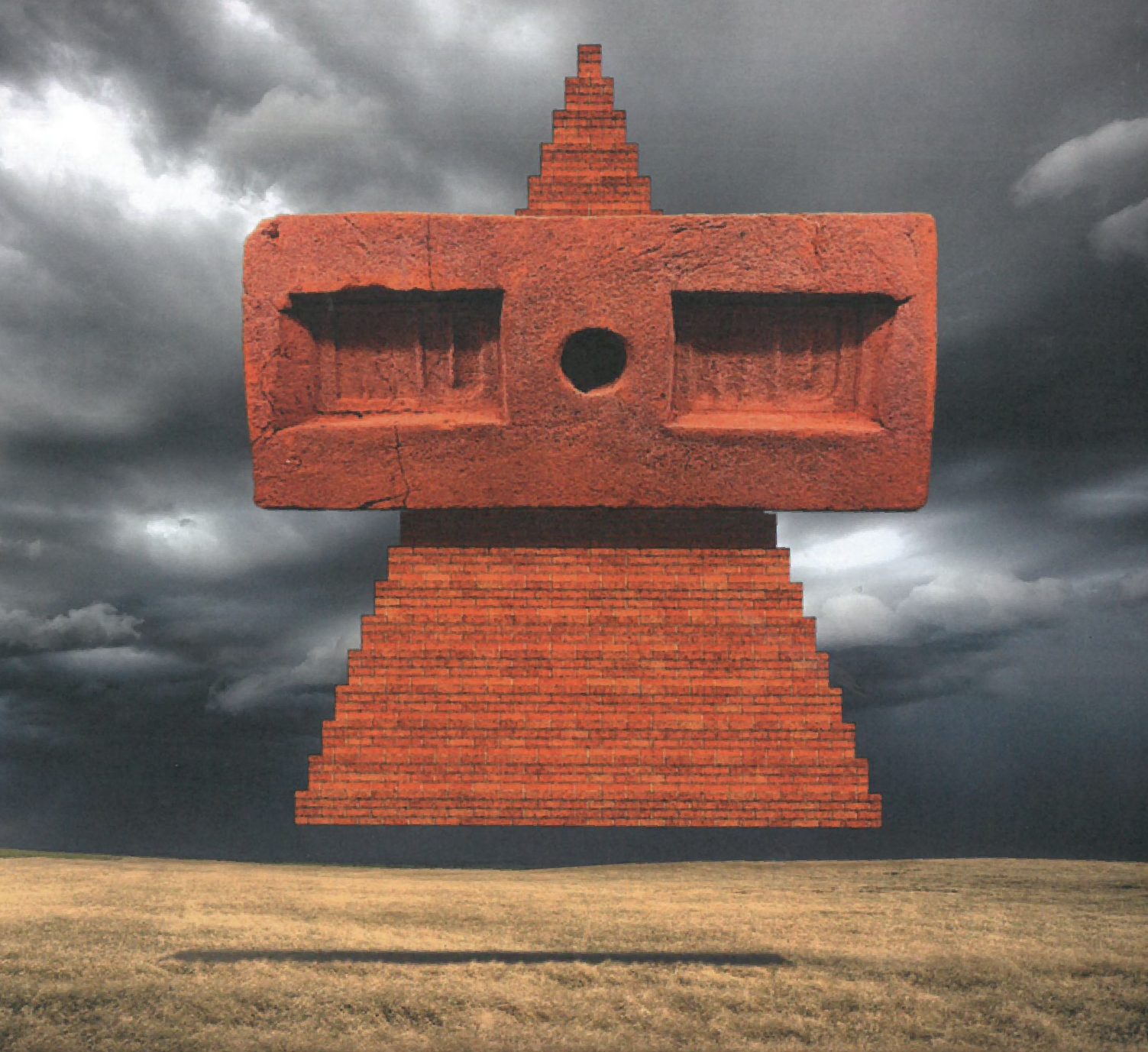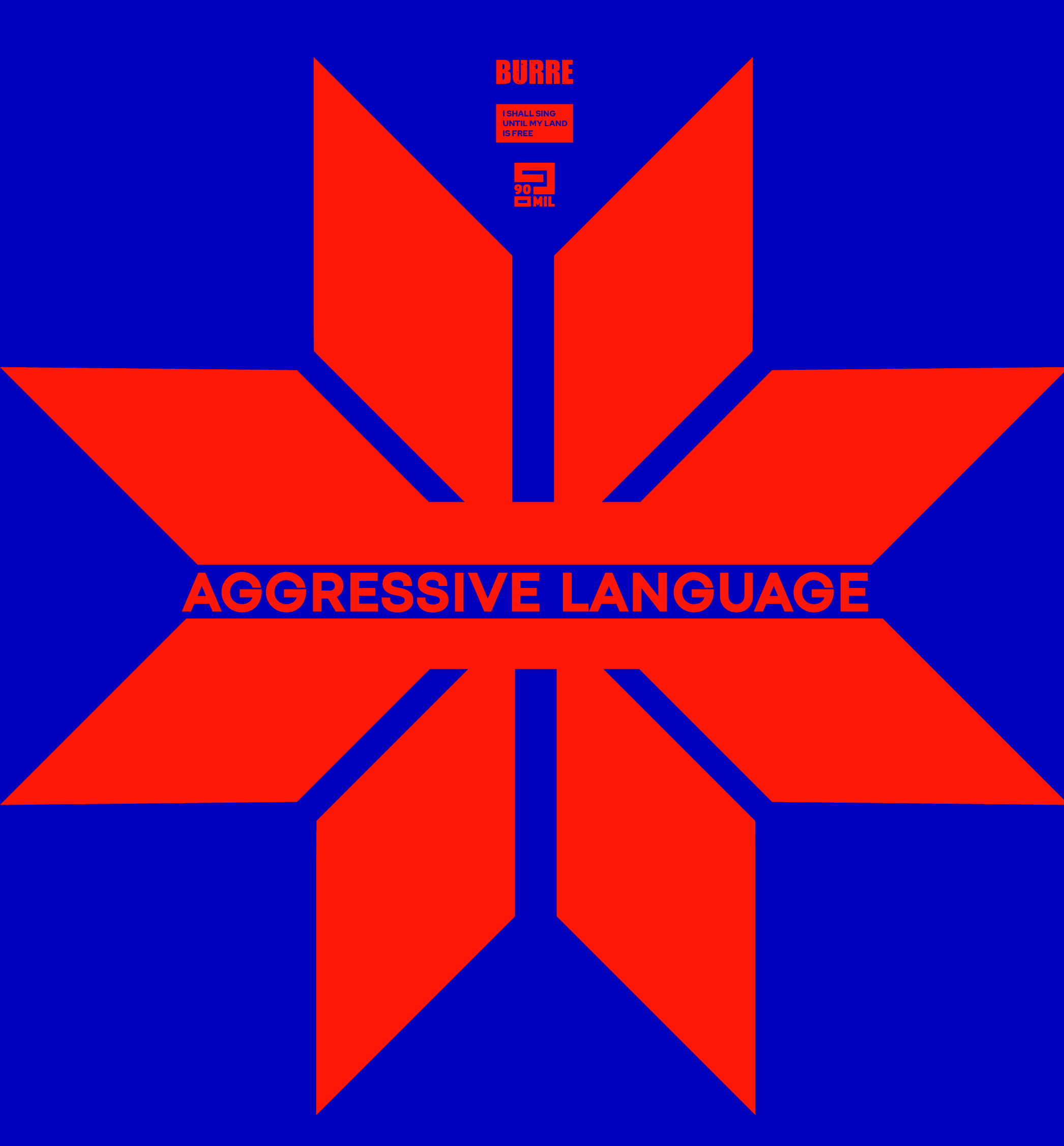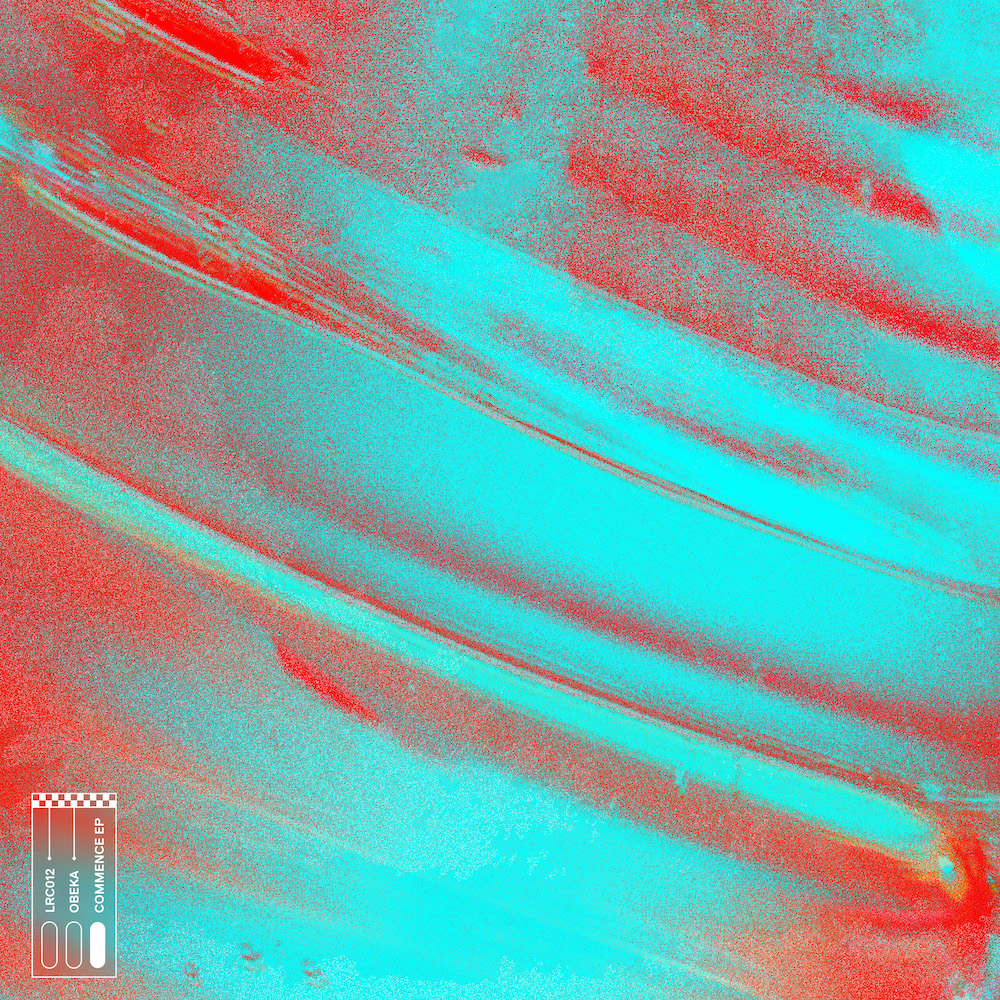Acid Thunder Sleevenotes #3

After the success of Terry Farley's massive 'Acid Rain' box set, the veteran Boys Own member is teaming up with the Harmless label once more to bring out 'Acid Thunder' – a 5 CD retrospective of the best in deep house, jack tracks and classic acid spanning 1986 – 1991. In addition, one disc will be dedicated to the memory of Frankie Knuckles, with songs by Knuckles, as well as tracks associated with him.
In case you missed the first two parts, you can read them here and here. For this third outing, Jacob Arnold takes a look at the wonders of Chicago;
Chicago Connection and Sunset Records
Around the time Konders was creating his first house music productions, the Chicago Connection label was winding down. Mitchbal & The Housemaster’s “When I Hear The Music” was the label’s last single, released only as a test pressing.
Nemiah Mitchell Jr., aka Mitchbal, produced a couple of R&B 45s in 1982 before his son, Vince Lawrence, introduced him to synthesizer-heavy New Wave music. Lawrence formed his own band, Z-Factor, including friend and DJ Jesse Saunders. Saunders and Lawrence released “On and On,” widely acknowledged as the first Chicago house single. When Saunders and Lawrence went on to create their own labels (Jes Say Records and Trax Records), Mitchell was left to his own devices.
“I stayed in the music business because I’m competitive. When Vince and Jesse left, I had to show them I wasn’t in the music business just because of them,” Mitchell tells Tom Cox in the liner notes to the Chicago Connection compilation Jerome Derradji Presents: 122 BPM – The Birth of House Music. The label’s biggest hit was Jeanette Thomas’ moody “Shake Your Body,” recorded with an amateur vocalist as studio time for the group Libra Libra wound down.
Like D.J. International, Sunset Records grew from Chicago’s disco DJ scene. In the late 1970s, Robert Rojo spun at his friends’ parties on home record players before investing in professional gear. He teamed with DJ Miguel Garcia and his brother Carlos to form Sunset Mobile Disco. The group provided sound and lights for weddings and cotillions before moving into teen parties and developing a strong following. In 1979, Sunset Mobile Disco threw the first dance of their own at Rizal Center on Chicago’s north side. “We made two, three thousand dollars in one night,” Miguel recalls in the liner notes to Jerome Derradji presents Kill Yourself Dancing: The Story of Sunset Records Inc. Chicago 1985-89 on Still Music. “Back then that was a lot of money.”
Miguel and Carlos’ family moved to Miami the following year, leaving Alex and Robert to expand the business on their own. The Rojo brothers built their own custom lights, including an elaborate control panel full of LED indicators. Soon even WBMX’s Hot Mix 5 were hiring Sunset Mobile Disco to provide sound and lights for their events.
When Miguel returned to Chicago in 1983, he met DJ Matt Warren, who was rapping at a talent competition, and the pair decided to make their own records. After funding for their first single fell through, they approached the Rojo brothers with the idea of starting their own label. The label’s first single, the Razz EP, released in May 1985, featured the combined talents of Matt Warren, Ralphi Rosario, Miguel Garcia, and Farley “Jackmaster” Funk with assistance from studio musician Dane Roewade. Matt Warren recalls the entire group yelling “kill!” into the microphone for the chorus of the A-side track “Kill Yourself Dancing.”
Sunset Records went on to release a dozen singles between 1985 and 1988. Inspired by Big Audio Dynamite’s “Bad,” Miguel Garcia composed the keyboard parts to “Persia” at home. He and Matt Warren completed the production at Chicago Trax Recording Studio with studio musician Tom O’Callaghan as Modern Mechanical Music.
Ralphi Rosario’s Hex Complexx single was also written spontaneously. “I just programmed a couple of drum tracks, wrote a couple of bass lines,” Ralphi recalls. Even years later, he’s pleasantly surprised by the single’s success. “It was an outlet for me,” he explains.
Matt Warren eventually left Sunset Records to start his own label, AKA Dance Music, funded by and named after the club where he spun. “Take Me Higher” by Nexus 6 (1988) was the label’s final release. By this time engineer and musician Dane Roewade had created his own studio. When Jaime Bonet and Marco Christy hired him to record their song, he brought the result to Matt Warren to publish. It was the pair’s only release as Nexus 6, but the following year they recorded an album for Trax Records as Nouveaux Nation.
AKA Dance Club’s owners sold their business to start Club Flamingo in early 1987. Matt Warren spun there for a year before leaving for Coconuts, resulting in the shut down of his label.
Martin “Boogieman” Luna was another Club Flamingo DJ. Luna grew up on Chicago’s South Side, but between the ages of nine and fifteen, he spent part of the year at his family’s property in Texas. On returning to Chicago in the 1982, he lent his knife to a DJ crew he met on the bus. He quickly became part of their group, running lights, and learning to spin.
“When I started DJing, back then, hall parties were very popular,” Luna recalls. “There were hall parties every other week, if not every week.” Local community halls, owned by religious groups, clubs, or unions, were often rented out for weddings, cotillions, and dance parties.
Luna played everything from The Human League and Yazoo to The S.O.S. Band and Earth, Wind & Fire. His big break was becoming DJ at Prime & Tender around 1985. Soon after, Luna began producing (originally with Joe Diaz and Lou Sparano) as Mix Masters for D.J. International.
“In the Mix” was Luna’s biggest hit, appearing in Madonna’s movie Truth or Dare. Luna sampled Loleatta Holloway’s “Love Sensation,” then recorded himself saying “in the mix” in the style of the rap from Indeep’s “Last Night a DJ Saved My Life.” In turn, Luna’s track has been sampled or referenced by artists as diverse as RuPaul and Danzel.

















Must Reads
David Holmes – Humanity As An Act Of Resistance in three chapters
As a nation, the Irish have always had a profound relationship with the people of Palestine
Rotterdam – A City which Bounces Back
The Dutch city is in a state of constant revival
Going Remote.
Home swapping as a lifestyle choice
Trending track
Vels d’Èter
Glass Isle
Shop NowDreaming
Timothy Clerkin
Shop Now